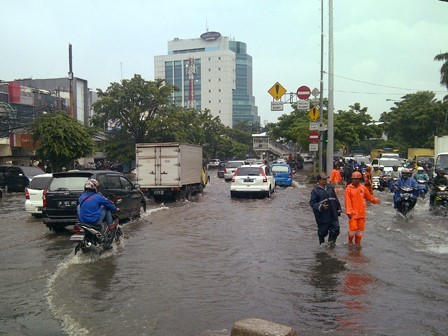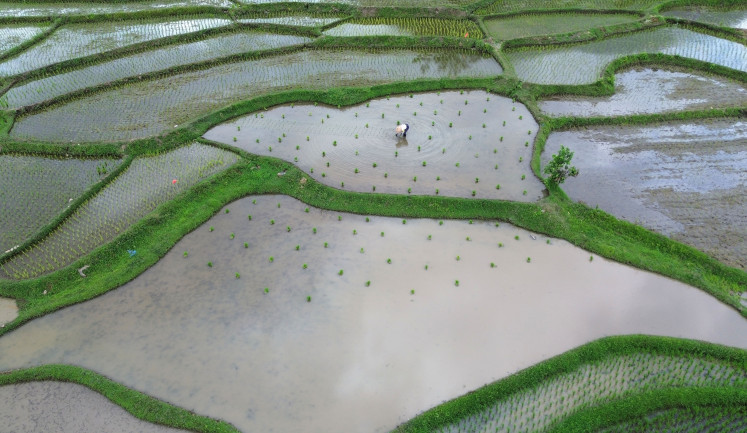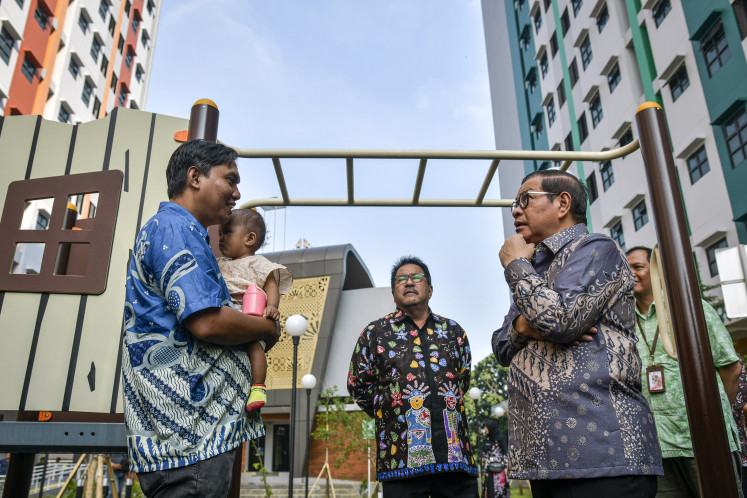Popular Reads
Top Results
Can't find what you're looking for?
View all search resultsPopular Reads
Top Results
Can't find what you're looking for?
View all search resultsToward water sensitive cities
Change text size
Gift Premium Articles
to Anyone
T
he condition of water management in urban areas in Indonesia is far from satisfactory. Flooding, water scarcity, and the poor water quality of urban rivers are just some examples or factors that strengthen the argument that Indonesian cities ought to take a “water sensitive city” approach into account.
This article aims to briefly introduce the principles of water sensitive cities so they can be incorporated into Indonesia’s urban planning agenda.
A water sensitive city is a conceptual term referring to sustainable and resilient water management practices and planning in urban areas (Ferguson et al, 2013). According to Wong et al (2009), there are three major principles underpinning the development of water sensitive cities:
First, the cities should function as water supply catchments. The value of this principle is in creating more water sources for the cities and their communities. These water sources include groundwater, surface water, and even stormwater and recycled water.
To fulfil this function, cities need infrastructure that adopt sustainable water planning principles such as harvesting, treating, storing, and distributing water (Wong et al, 2009). Besides that, retrofitting sustainable urban water infrastructure is important in order to provide better services in urban water management in Indonesia.
One widely used approach of sustainable urban water management and planning is Water Sensitive Urban Design (WSUD). WSUD integrates a range of design techniques that include water cycle planning and management principles into a system.
WSUD technologies vary from small scale approaches for households and neighbourhoods to larger infrastructure design for whole cities. At the household level, rainwater harvesting using water tanks and dry (infiltration) wells are the simplest example of this approach. This kind of approach will also be beneficial for some regions in Indonesia because we have a relatively high precipitation rate throughout the year. At the city level, constructed wetlands and riparian buffers would be good techniques for Indonesia given the fact that we have a large number of rivers and ponds.
The second principle states that cities should function as ecosystem services providers (Wong, 2009). The essential value offered by this principle is to protect the environmental health of water-related elements in urban areas from development pressures.
This principle is relevant for our country because the health of the waterways of many Indonesian cities is very poor. For example, the water quality of rivers and ponds in Jakarta, according to Hendrawan (2005), ranges from poor to fair. In his research, Hendrawan recorded no rivers or ponds with good quality water.
Furthermore, the existence of rivers, lakes, wetlands, other waterways and even green open spaces in cities must be viewed as potential assets for urban water sources. Consequently, preserving urban waterways and open spaces should be one of the top priorities of development in urban areas. At this point, spatial planning and zoning provisions play a very important role in achieving this objective.
Technical aspects, such as those mentioned above, however, are not adequate for a water sensitive cities approach. We need more than that. We need robust commitment and strategic action from different stakeholders.
This is explained by Wong (2009) in the third principle, which states that water sensitive cities require socio-political commitment from various stakeholders. This principle covers the governance aspect of urban water management and planning and includes improvements in institutional capacity, private sector contribution and community participation.
Improving institutional capacity is a complex issue because most local governments in Indonesia see urban water as a lesser priority in the urban development agenda.
By introducing the importance of the water sensitive cities concept in this article, I hope that municipalities in Indonesia will reform their urban water management practices and make it one of their priority development programs.
Furthermore, the private sector, as part of the urban community, must lead and innovate and begin applying a WSUD approach. Last but not least, active participation from diverse communities is also needed to establish comprehensive governance for water sensitive cities.
I realise that this approach may not be easy to adopt within a short time-frame. For that reason, we must begin taking action – however small - as a first step toward creating better urban water management.
***
Rendy is currently studying urban planning at the University of Melbourne. He is also on Instagram @renbayu.
---------------
We are looking for information, opinions, and in-depth analysis from experts or scholars in a variety of fields. We choose articles based on facts or opinions about general news, as well as quality analysis and commentary about Indonesia or international events. Send your piece to community@jakpost.com.










